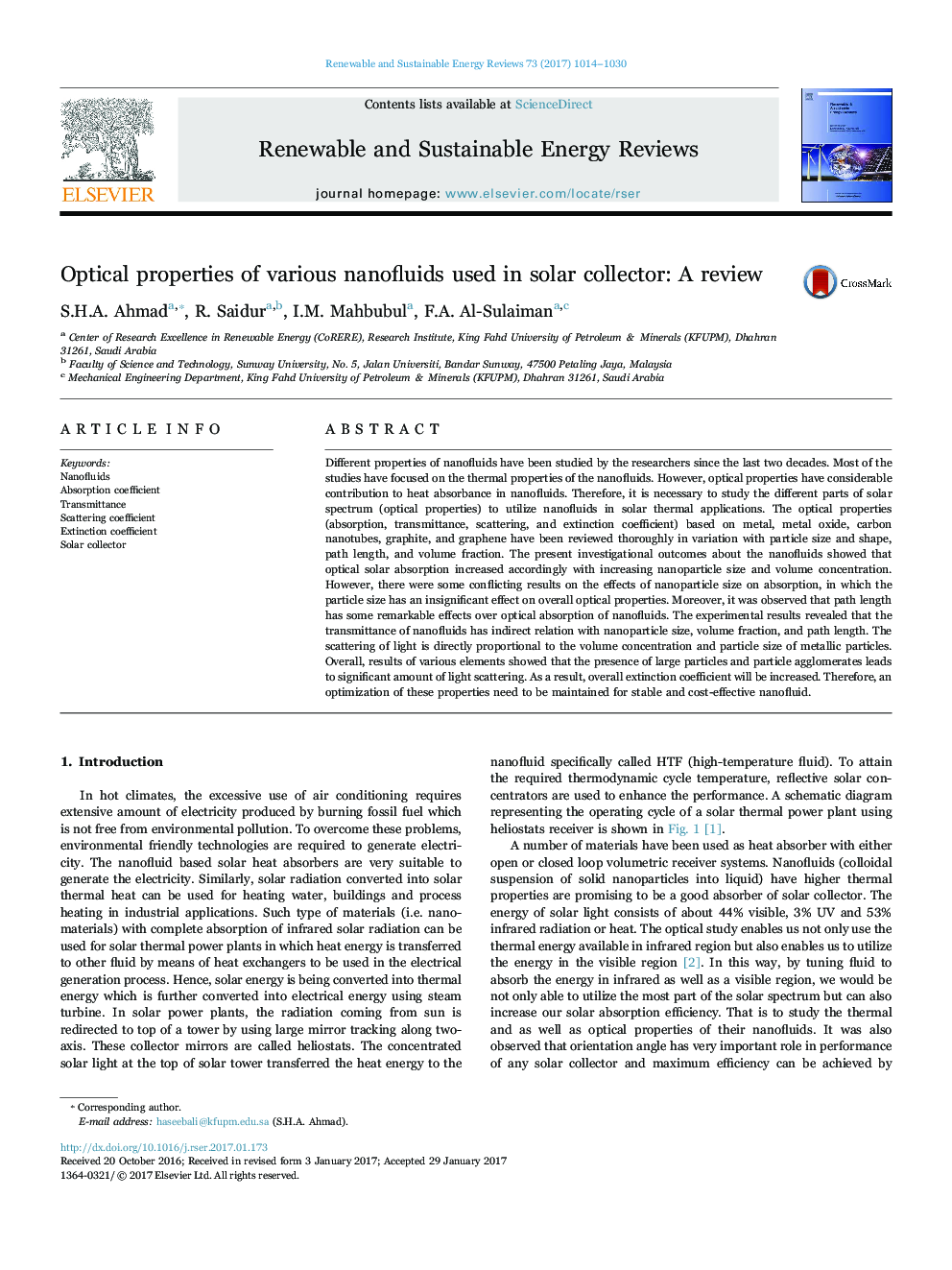| Article ID | Journal | Published Year | Pages | File Type |
|---|---|---|---|---|
| 5482316 | Renewable and Sustainable Energy Reviews | 2017 | 17 Pages |
Abstract
Different properties of nanofluids have been studied by the researchers since the last two decades. Most of the studies have focused on the thermal properties of the nanofluids. However, optical properties have considerable contribution to heat absorbance in nanofluids. Therefore, it is necessary to study the different parts of solar spectrum (optical properties) to utilize nanofluids in solar thermal applications. The optical properties (absorption, transmittance, scattering, and extinction coefficient) based on metal, metal oxide, carbon nanotubes, graphite, and graphene have been reviewed thoroughly in variation with particle size and shape, path length, and volume fraction. The present investigational outcomes about the nanofluids showed that optical solar absorption increased accordingly with increasing nanoparticle size and volume concentration. However, there were some conflicting results on the effects of nanoparticle size on absorption, in which the particle size has an insignificant effect on overall optical properties. Moreover, it was observed that path length has some remarkable effects over optical absorption of nanofluids. The experimental results revealed that the transmittance of nanofluids has indirect relation with nanoparticle size, volume fraction, and path length. The scattering of light is directly proportional to the volume concentration and particle size of metallic particles. Overall, results of various elements showed that the presence of large particles and particle agglomerates leads to significant amount of light scattering. As a result, overall extinction coefficient will be increased. Therefore, an optimization of these properties need to be maintained for stable and cost-effective nanofluid.
Keywords
Related Topics
Physical Sciences and Engineering
Energy
Renewable Energy, Sustainability and the Environment
Authors
S.H.A. Ahmad, R. Saidur, I.M. Mahbubul, F.A. Al-Sulaiman,
